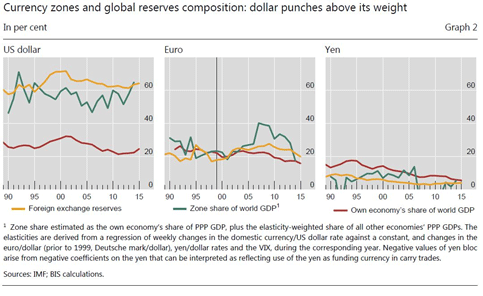It’s the US dollar’s world, and we’re all just living in it. That was, I think, the conclusion of a speech given on the global currency market by Claudio Borio at the Bank for International Settlements (BIS). I’ve never met Claudio Borio. But he consistently produces some of the most thought-provoking research on what he calls the international monetary and financial system (IMFS).
His latest report – More pluralism, more stability? – takes on the question of whether the IMFS would be more stable if it were less dependent on the US dollar. From a geopolitical perspective, countries like Russia, Iran and China have been trying to get from under the greenback’s thumb. It’s easier said than done.
The dollar remains dominant. Borio explains why. He calls it the “gravitational force”, not dissimilar to the price action in a share which influences the behaviour of traders. Borio writes that:
The dollar exerts a powerful gravitational force on other currencies, as judged from how currencies move in relation to each other. Based on statistical techniques that seek to tease out this effect, if one considers the euro and yen as the other possible reference currencies and uses GDP weights, the “dollar zone” was, again, around 60% in 2014, the euro was second at only 25% and the yen a distant third. This gravitational pull, in turn, has a deep influence on the denomination of countries’ assets and liabilities and, hence, also on FX reserve composition, as it determines a portfolio’s sensitivity to exchange rate fluctuations. There is a clear positive relationship across countries between these shares and the degree to which currencies co-move with the dollar.
I’ve included the picture from the BIS report below. It shows better than Borio tells. But what exactly does it show? Mostly it shows that when it comes to foreign exchange reserves and share of world GDP, the entire world is still in the “dollar zone”. Part of this is explained by the sheer size of the US economy, which is just under 25% of total global GDP.

Source: Bank for International Settlements
It’s dangerous to use analogies from the physical world in economics. But the “gravitational” force of the dollar exerts a certain pull, if you’ll pardon the pun. The euro is an exception. It was a gradual change to the global currency cosmos. It added another force to the global forex and debt markets and thereby changed the way capital flows in the global economy.
But the dollar is the sun, and the euro and the yen are merely gas giants: ponderous and inexorable in their own way. But not the centre of solar system. Which begs the question… is there a way that the existing order can change without a major calamity?
We are talking about giant financial forces; plate tectonics would be another analogy. Pressures build up. Something gives. The Earth trembles. Is that what we’re seeing right now in the IMFS? Or does the analogy simply confuse the thinking?
Category: Economics

